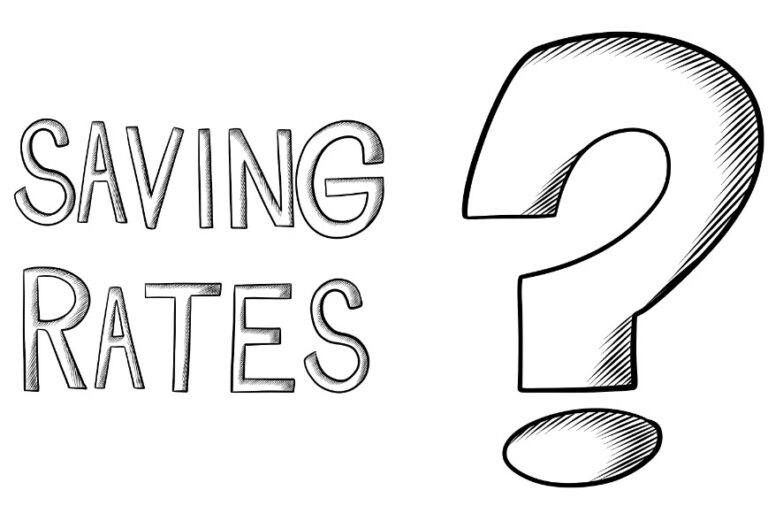A reader asks:
On this week’s show you discussed lifestyle creep and that one way to mitigate it is by maintaining or increasing your savings rate. Are you aware of any frameworks on how to determine a ballpark target savings rate? Every year my wife and I create an annual budget that outlines the actual cash we receive from our paychecks and annual bonus (after 401k, taxes etc.), we set a target savings rate and then allocate the rest to our major spending categories. We’ve triangulated around a target of 17%-20% but I’m curious if there are any rules of thumb or anything else that can help us validate it. I may be overthinking it because that percentage range seems to work for our lifestyle but it’s always nice to have something to anchor to.
Personal finance experts hate lifestyle creep but it’s impossible to avoid. If you make more money, you should spend more money. It’s a sign of progress!
But you should also be saving more money when you make more. The pie is just getting bigger.
My solution for those of you who are looking to have it all is to simply maintain your savings rate as a percentage of your income over time.
Let’s say you make $100,000 a year and save 20% of your income. If you get a big promotion and now make $200,000 a year but still save 20% of your income, you’ll save more money but also have the ability to spend more.
Yes, this sounds obvious but it’s easy to fall into the trap of increasing your spending without the commensurate rise in savings.
It sounds like this person has this all figured out. They’re creating an annual budget. They’re triangulating (great word choice) a savings rate in the 17-20% range. That savings rate works for their lifestyle.
But is it the right savings rate?
One of the hardest parts about finance is that it’s not like physics or architecture. There are new rules that govern the universe of money. Personal finance is not like building a house or a bridge, where precise specs and measurements are required.
You’ll never be afforded that level of precision regarding your finances. When it comes to long-term financial planning, there is more guessing involved than most people realize.
There are rules of thumb, like the old 50/30/20 rule that states:
- 50% of your budget should go towards necessities (mortgage/rent, food, healthcare, insurance and other regular bills)
- 30% of your budget should go towards (restaurants, travel, entertainment, etc.)
- 20% of your budget should go towards savings (retirement, emergency savings, paying down debt, etc.)
As with every rule of thumb, there are exceptions. Your lifestyle, where you live, spending habits, and personal circumstances play a big role.
After years of thinking about this, crunching all sorts of numbers and scenarios and my own personal experience, I’ve settled on a double-digit savings rate as a percentage of your pre-tax income.1
That should be the goal when you’re just starting out. Then you work your way up from 10% to an end state of say, 15-30%, depending on your needs, desires, and risk appetite.
The wonderful thing about a healthy savings rate is that it means fewer dollars to replace when you stop working someday. So it’s not only the compounding you get by inventing your capital but the margin of safety it provides when life events happen.
My savings rate is somewhere in the 25-30% range. I’ve tried to keep that number relatively stable but there are times when life intervenes. Some years it’s been higher than that. Other years it’s been lower than that.
When I first started working, it took me a long time to hit the double-digit target. I didn’t make enough money, so I slowly but surely increased my savings rate as I progressed through my career. Every time I got a raise or a new job, I increased my savings rate a little more until I was comfortable with it.
I’m not a FIRE savings rate psycho but this is a good steady state for my financial goals and where I’m at in life.
Since there are no perfect answers in personal finance, my goal is to have a savings rate that sometimes feels a little painful. Can you imagine if we spent that money instead of saving so much in our retirement accounts? The fun we could have!
But the spending should also be enough to counteract that pain. Can you imagine if we saved that money in our retirement accounts instead of spending it? The compounding!
It’s a balancing act.
We discussed this question on the latest edition of Ask the Compound:
Alex Palumbo joined me again on the show this week to talk about his experience as a young advisor with Ritholtz Wealth. We also touched on questions about performance-chasing, the psychology of buying a home using your savings and the pros and cons of commingling your funds when you get married.
1Owning a house is a form of forced saving but it’s also a form of forced consumption so I’m never really sure how to reconcile that one.
